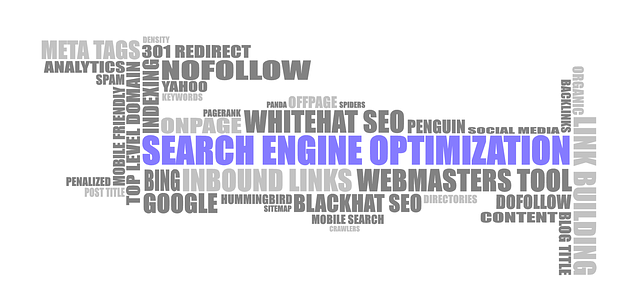… … [g. … … [ … … … [ … … … … … … … … … … … … … … … … … … … … … … … … … … … … … … …
In today’s digital landscape, successful online visibility hinges on robust SEO strategies. This article guides you through essential white-hat SEO techniques for ethical and effective search engine optimization. We’ll explore keyword research strategies focusing on long-tail keywords, content creation that engages and optimizes for search, on-page optimizations, quality backlink building, technical SEO considerations, and the importance of regular audits and analytics. Mastering these safe SEO strategies ensures your website’s longevity and growth in a competitive digital environment.
Understanding White-Hat SEO: The Ethical Approach

White-Hat SEO refers to a set of ethical practices and techniques designed to enhance a website’s search engine rankings over time, without cutting corners or violating any guidelines. It is named after the “white hat” metaphor in the world of cybersecurity, representing honest and transparent strategies that don’t harm user experience or break rules. These techniques focus on delivering valuable content, improving site structure, and building relevant links naturally. By focusing on quality and relevance, White-Hat SEO ensures search engines like Google reward websites with higher positions for genuine value rather than quick tricks.
Adhering to White-Hat SEO Techniques involves optimizing your website by creating compelling, keyword-rich content that satisfies user intent. This includes ensuring fast loading times, mobile responsiveness, and easy navigation. It also encourages building relationships with other reputable websites in your niche through non-spammy link-building strategies, such as guest blogging and creating shareable assets. Ultimately, the goal is to earn high rankings organically, attract more organic traffic, and build a strong online presence that stands the test of time.
Keyword Research: Finding Relevant, Long-Tail Keywords

Keyword research is a cornerstone of successful SEO, and it’s where the magic begins. Using White-Hat SEO Techniques, you can uncover hidden gems in the form of long-tail keywords. These are specific phrases that accurately reflect user search intent and have less competition than short-tail, more general keywords. For instance, instead of targeting “shoes,” consider “best running shoes for wide feet.” This approach not only caters to a niche audience but also aligns with Google’s focus on delivering relevant, high-quality content.
By employing these White-Hat strategies, you can identify low-hanging fruits in the search engine rankings while avoiding risky tactics that could lead to penalties. Regularly updating your keyword strategy and staying attuned to industry trends will ensure your content remains optimized for both users and search engines.
High-Quality Content Creation: Engaging and Optimized

Creating high-quality, engaging content is a cornerstone of successful White-Hat SEO Techniques. This involves understanding your target audience and crafting content that meets their information needs while aligning with search engine algorithms. Instead of focusing on tricks or shortcuts, White-Hat SEO prioritizes producing valuable, unique, and optimized content that resonates with both users and search engines.
To ensure content is optimized effectively, incorporate relevant keywords naturally into headings, meta descriptions, and throughout the text. This process, known as keyword optimization, enhances visibility in search results without compromising readability. By combining compelling narratives with strategic SEO practices, you can create a winning formula that attracts organic traffic while adhering to ethical guidelines.
On-Page Optimization Techniques for Better Visibility

When it comes to on-page optimization, adhering to White-Hat SEO Techniques is paramount for enhancing search visibility. This involves optimizing key elements within your website’s source code and content. Start by conducting thorough keyword research to identify relevant terms your target audience uses when searching for products or services related to your niche. Incorporate these keywords naturally into your page titles, meta descriptions, headings (H1-H6), and throughout the body text—but avoid keyword stuffing, as it can lead to penalties from search engines.
Additionally, focus on creating high-quality, engaging content that provides value to your audience. This includes using descriptive and compelling URLs, optimizing images with alt tags, ensuring fast page load times, implementing structured data markup, and enhancing internal linking. By combining these White-Hat SEO Techniques with valuable content, you can significantly improve your website’s ranking potential and attract organic traffic from search engines.
Building Quality Backlinks: Natural and Relevant Sources

Building high-quality backlinks is a cornerstone of successful White-Hat SEO Techniques. These links should come from natural and relevant sources to enhance your website’s authority and visibility in search engine results pages (SERPs). Focus on creating valuable content that naturally attracts links from reputable websites within your industry or niche. This could involve writing insightful blog posts, conducting in-depth research, or offering unique tools and resources that other sites will want to link to.
Relevant sources can include industry leaders, influential bloggers, educational institutions, or government websites. When reaching out for backlinks, make sure your request aligns with their content strategy and offers value to their audience. This approach not only helps in building a robust backlink profile but also ensures the links are of high quality and beneficial to your SEO efforts.
Technical SEO: Website Structure and User Experience

Technical SEO plays a pivotal role in ensuring your website is not only visible to search engines but also provides an optimal user experience. Website structure, built on solid White-Hat SEO Techniques, acts as the foundation of this process. A clean, hierarchical structure with well-organized content makes it easier for both users and search engine crawlers to navigate through pages, thereby enhancing site usability. This includes creating a logical sitemap, using descriptive URLs, and interlinking relevant pages, which not only aids in information architecture but also signals to search engines the importance of specific pages.
A user-friendly experience is another critical aspect. Fast loading times, mobile responsiveness, and intuitive design contribute to keeping visitors engaged. Search engines, like Google, prioritize websites that offer a seamless browsing experience. By implementing these technical SEO practices, you not only improve your website’s visibility on search engine result pages (SERPs) but also create a positive feedback loop where satisfied users become advocates, further boosting your online presence.
Regular Audits and Analytics: Tracking Progress and Staying Ahead

Regular audits and analytics are integral components of any successful White-Hat SEO Techniques strategy. By continuously monitoring your website’s performance, you can track progress, identify areas for improvement, and stay ahead of algorithm updates. Using advanced analytics tools, you gain insights into user behavior, keyword rankings, and traffic sources, enabling data-driven decisions that optimize your site for better search engine visibility.
These audits should be comprehensive, covering technical SEO aspects like site speed, mobile-friendliness, and schema markup, as well as content optimization, link building, and backlink profile analysis. Regularly reviewing these factors ensures your website remains optimized and competitive in a dynamic digital landscape.
